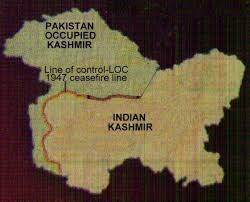
SHIMLA (TIP): The recent tragedy in Kashmir valley is being increasingly looked at as a manmade disaster, aggravated by reckless “developmental” activities with no regard for nature conservation. Bombay Natural History Society (BNHS) India‘s studies in the valley over the years reveal that there has been a severe loss of wetland habitat for various commercial activities.
BNHS has termed recent floods as an “ecological disaster” that highlights the urgency to enact Wetland (Conservation) Act, on the pattern of Forest (Conservation) Act, 1980. It is obvious from field studies that there has been massive loss of wetlands in Kashmir valley over the years. For instance, the famed Dal Lake in Srinagar has seen numerous reclamations all along its periphery in the marshy areas. This has drastically reduced the lake area to just about 1,200 hectares, which is almost half of its earlier spread, said a report from BNHS.
The vast expanse of Wular Lake and associated marshes — an Important Bird Area (IBA) – is another case in point. Once spread across 20,200 hectares, it now remains restricted to a mere 2,400 hectares. In the last 30 years, nearly 50% of wetlands in Kashmir valley have been encroached upon or severely damaged, it said. Commenting on the recent floods, Dr Asad Rahmani, director, BNHS, said, “This can be termed as an ecological disaster. The disastrous damage caused to life and property could have been minimized if the large number of wetlands, that once existed in the valley, had been preserved. Wetlands act as a sponge that retains excess water. Wular Lake is a classical example”.
Even the British and former Maharajas of Kashmir used to consider Wular as a buffer for the floods, where excess water can be absorbed. Rahmani said that wrong policies on the part of successive governments in the state have contributed to the wetland loss. “For example, encroachment upon shallow portions of the wetland by the forest department for plantation of willow trees has significantly reduced the size of Wular Lake over the years,” he said. Kashmir valley has one narrow opening towards the west for water from catchment areas to get drained down the Jhelum river.
From all other sides, it is encircled by high mountains, he said. During the reign of Maharajas of Kashmir, a well functioning water drainage system that was synchronous with the natural topography of the region was in place, Rahmani said. The same lay neglected in the recent decades. The myriad lakes and wetlands of the valley, which acted as sponge, were also well preserved in the past. Considering the importance of wetlands, not just in Jammu and Kashmir, but across India, Rahmani recommends the passing of a Wetland (Conservation) Act on the lines of Forest (Conservation) Act at the earliest.
“Protection of wetlands will not only help in flood control, but will also help in recharging ground water levels across the country and thus ensure better food security by way of increased water availability. Although the Central Wetlands Regulatory Authority exists at present, it has been proving ineffective in saving the wetlands,” Rahmani added. He said it is also important not to classify wetlands as wastelands, as wetlands play an important biological, cultural, economical, aesthetic and spiritual role.





Be the first to comment